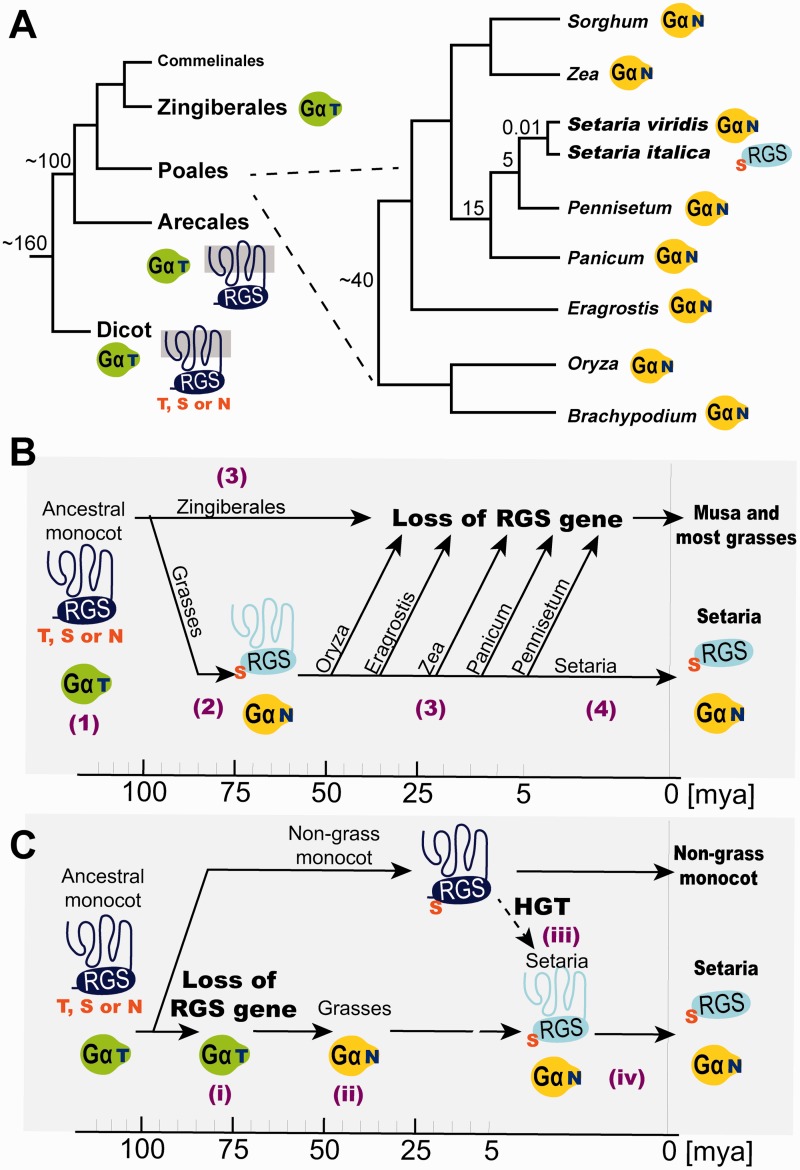Fig. 5.
Fixation of the Setaria italica SiRGS1 protein. (A) Phylogeny of grasses and their relatives is shown with estimated time of separation (Ma). Green Gα-T or yellow Gα-N represents Gα having threonine or asparagine at the RGS contact site. Dark blue 7TM-RGS or light blue RGS shows RGS with or without 7TM helices, respectively. The Gα-binding residue in dicot 7TM-RGSs is not fixed and varies between threonine (T), serine (S), and asparagine (N). Grasses, except the two Setaria species indicated, lack the RGS gene. (B) Time line of evolutionary events that have occurred on Gα and RGS genes in monocots. Key events are noted by a number in parentheses: (1) The ancestral monocot possessed the threonine Gα (green Gα-T) and 7TM-RGS. The Gα-binding residue of the 7TM-RGS varied between T, S, and N (dark blue 7TM-RGS). (2) Gα mutated the RGS-contact threonine with asparagine (yellow Gα-N). The mutation caused fixation of the Gα-contact site to serine (light blue 7TM-RGS). These events occurred between 100 and 40 Ma. (3) The 7TM-RGS gene was deleted independently from most grass genomes. The Zingiberales Musa acuminata also lacks the RGS genes, implying that the gene loss event occurred regardless of whether the partner Gα had threonine or asparagine. (4) The Setaria RGS gene lost a functional 7TM region within the last 5 My. (C) A model for horizontal transfer of the Setaria RGS gene. Key events are noted by Latin numbers. (i) A common ancestor of Zingiberales and Poales lost the 7TM-RGS gene. (ii) Grass Gα mutated the RGS-interacting site to asparagine. (iii) The Setaria RGS gene was acquired by horizontal gene transfer (HGT) from an unknown monocot in the past 5 Ma. (iv) The RGS domain, but not the 7TM domain, was fixed in the Setaria genome.

